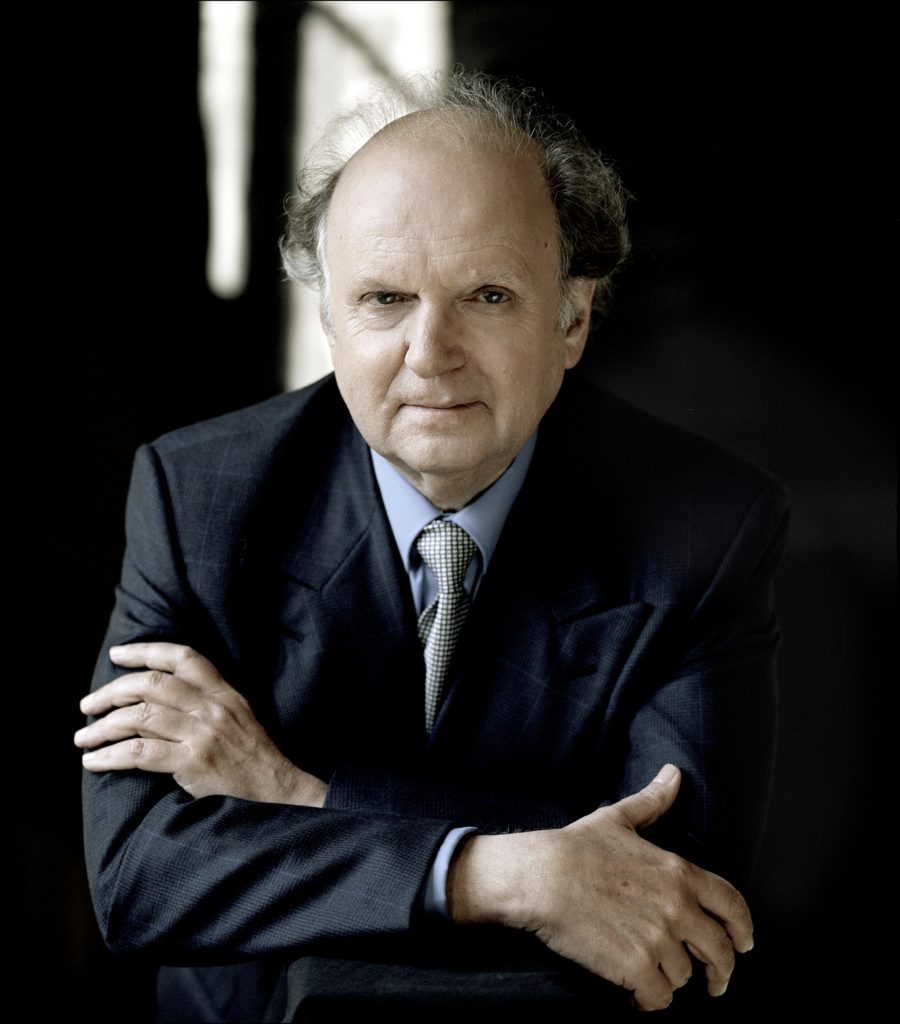Wagner outdoes Beethoven in Janowski’s Houston Symphony turn

Jones Hall was a soloist-free zone during the Houston Symphony’s concert Saturday night. That put the focus entirely on the orchestra’s chemistry with its guest conductor, Marek Janowski.
Born in Poland and raised in Germany, which has remained the center of his career, the veteran musician may be most associated with the operas of Richard Wagner. When digital recording was in its infancy in the early 1980s, Janowski conducted the first set of The Ring of the Nibelung to employ the new system. His Wagner credits include performances of the Ring at the composer’s own Bayreuth Festival, most recently in 2017.
And it was in two excerpts from Die Meistersinger von Nürnberg — the last segment of Friday’s Beethoven-and-Wagner program — that Janowski and the Houston Symphony really clicked.
Reversing the opera’s order, Janowski put the meditative Prelude to Act 3 before the Prelude to Act 1, with its sonorous main march tune. Maybe he wanted to give the concert a more rousing finish. In any case, the cellos sang out the Act 3 prelude’s first phrase in quiet, mellow tones, and the entire vignette unfolded richly.
The violas and violins, entering section by section, added their own fullness and smooth lines. Then, with the sonorous French horns as the linchpin, the brasses and winds introduced new glow with their chorale, giving it a depth and heft that complemented the strings’ warmth.
Beckoning to the players expansively, Janowksi led them to savor the prelude’s spacious, swelling melodies and its crossplays of church-window coloring. With a prod from Janowski, the orchestra bore down on the one burst of agitation. Then the group tapered off Wagner’s lyricism with a graceful, gentle touch.
The festive march that opens the Act 1 prelude — which, in the opera, evokes the masters of the work’s title — set a whole new scene, of course. Janowski and the orchestra gave the tune a sturdy tread and hearty, confident tone. The violins gave a sleeker, sweeter cast to their more-relaxed theme. The woodwinds’ crispness and buoyancy highlighted the playfulness of their little dance, linked in the opera to the masters’ apprentices.
Janowski let the strings pull a bit apart from one another during their short interjection in the midst of that dance, but he later drew led the orchestra to bring clarity and vigor from the orchestra during to Wagner’s contrapuntal tour de force of mixed-and-matched themes. And the opening march’s return capped off the prelude with a blaze of orchestral sunshine.
Right after intermission, the chorale that opens Wagner’s Overture and Venusberg Music from Tannhäuser hinted at the songfulness and grandeur Janowski and company would bring to Meistersinger. The winds gave the chorale a quiet breadth when it first appeared; the entire orchestra repeated it in ringing tones.
Where the music conjures up the love goddess Venus — who tempts the opera’s title character — the orchestra surged through it at Janowski’s prompting with eagerness and sweep. The strings’ energy and agility brought a particular electricity, and the winds and percussion added their own wildness.
As the Venusberg Music simmered down, silky clarinet playing helped set the cozier tone. But the orchestra by and large lacked the delicacy and blend to capture the music’s seductive shimmer. Of course, that’s a particularly tall order in Jones Hall, whose dry acoustics don’t help delicate strands coalesce.
Before intermission, Beethoven’s Symphony No. 2 could have used some of the gusto the orchestra put into Wagner.
The performance began with promise. Tinges of breeziness kept the opening Adagio from being a stereotypical slow introduction: The rhythms had a lively snap, and the strings tossed off their roulades lightly. After the first movement proper took off, the woodwinds lent their upward-vaulting theme a jubilant incisiveness.
Janowski and the orchestra brought the symphony brisk tempos, a general brightness and touches of smooth melody. But they never quite put across the young Beethoven’s rowdiness and ardor.
In the first and last movements, the orchestra’s playing was a bit loose around the edges, lacking the precision and bite that would’ve let Beethoven’s high spirits burst forth. Even in the Larghetto, Janowski didn’t have the group firmly in hand, and his approach was a little tame: Beethoven’s lyricism never reached out. For that matter, the entire symphony seemed polite. How often should that word be associated with Beethoven?
Guest conductor Fabien Gabel will lead the Houston Symphony in Beethoven’s Piano Concerto No. 1 (with soloist Emanuel Ax) and Brahms’ Symphony No. 2 at 8 p.m. Nov. 15 and 16, 2:30 p.m. Nov. 17 in Jones Hall. houstonsymphony.org; 713-224-7575


